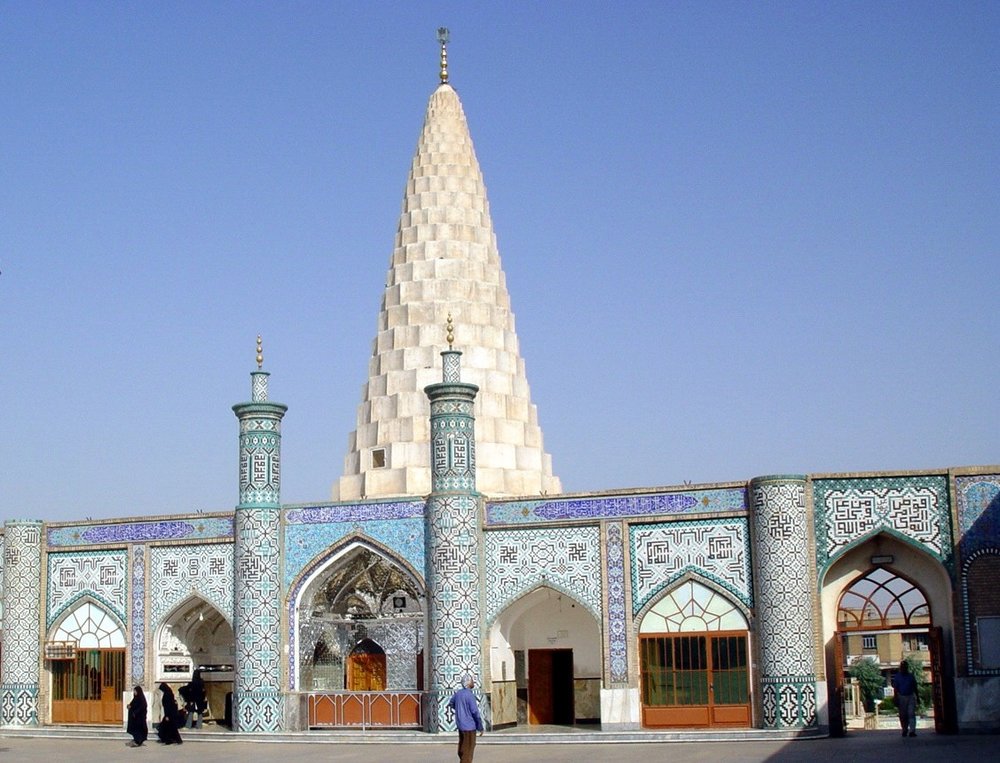A brief look at biblical tomb in Iran

The tomb of the biblical prophet, Daniel, in southwestern Iran is daily revered by great numbers of domestic pilgrims including the Jewish community.
Surmounted by a massive cone in white plaster, the mausoleum of biblical prophet attracts foreign travelers as well.
The mausoleum cannot be missed while traversing Shush, though its architecture is of no great antiquity. It contains two courtyards, each encircled by adjoining chambers and porches.
The pilgrimage also offer some accommodations to visitors willing for an overnight stay.
According to Atlas Obscura, there are many places that claim to be the traditional burial place of the biblical prophet. But the tomb located in Shush is the most widely accepted and the first that was mentioned by Benjamin of Tudela, a medieval Jewish traveler whose journeys preceded Marco Polo’s by about 100 years, and who first visited Asia between 1160 and 1163.
Shush, which was once a crossroads of various civilizations, is sprawled on parts of ancient Susa at the edge of the Iranian plateau in the lower Zagros mountain range.
UNESCO says the region contains several layers of superimposed urban settlements in a continuous succession from the late 5th millennium BC until the 13th century CE.
Under travelers’ eyes
Here is a select of comments that visitors to the mausoleum have posted to TripAdvisor, one of the most popular travel websites in the world:
“A Biblical Connection”
Located very near to the Susa Museum (which in itself is a fantastic place), Daniels Tomb is less famous and obviously less visited.
Yet when you think back to 500 BC, the proximity of this land to Mesopotamia, and of this Town to other biblical characters like Esther and Nehemiah - there is much to ponder. A city that has lived for over five millennia, a site that houses the tomb of Daniel, and all the to-ing and fro-ing of humanity that has witnessed the churn of recorded history. Impressive. (Alex from Bangalore, India; reviewed April 2017)
“The bible comes alive”
The tomb of Daniel is not imposing from the outside, but is awesome once entering. There are mirrors reflecting light everywhere.
It is a peaceful but imposing sight. Men and women must go into separate (but equal) entrances. (PGIT from New Hyde Park, New York; reviewed June 2016)
“Tomb of Daniel, build in 19th Century”
The Tomb is in mosque. There is no sign in Latin alphabet, but the tower is visible from the distance. There is no entry fee. Since it is a mosque, it is not allowed (for non-Muslims) to enter during prayers. Men and women have separate entries. (Tomas Gal form Bratislava, Slovakia; reviewed September 2015)
“Religious, historical and cultural site”
One of the main reasons I came to Susa (Shush in Persian) was to visit this Jewish prophet's tomb, which is of Daniel. It is a mosque and 99% of the worshipers are Muslims. You might see tourists and if you ask them, they might be Jewish. It’s a simple place. The main feature is the step, conical feature on top of the complex. For women, they need chadors, and there are spare ones out in the courtyard. (GZCS from San Francisco, California; reviewed November 2015)
PHOTO: A view of Daniel mausoleum in Shush, southwest Iran
AFM/MQ/MG
